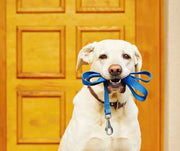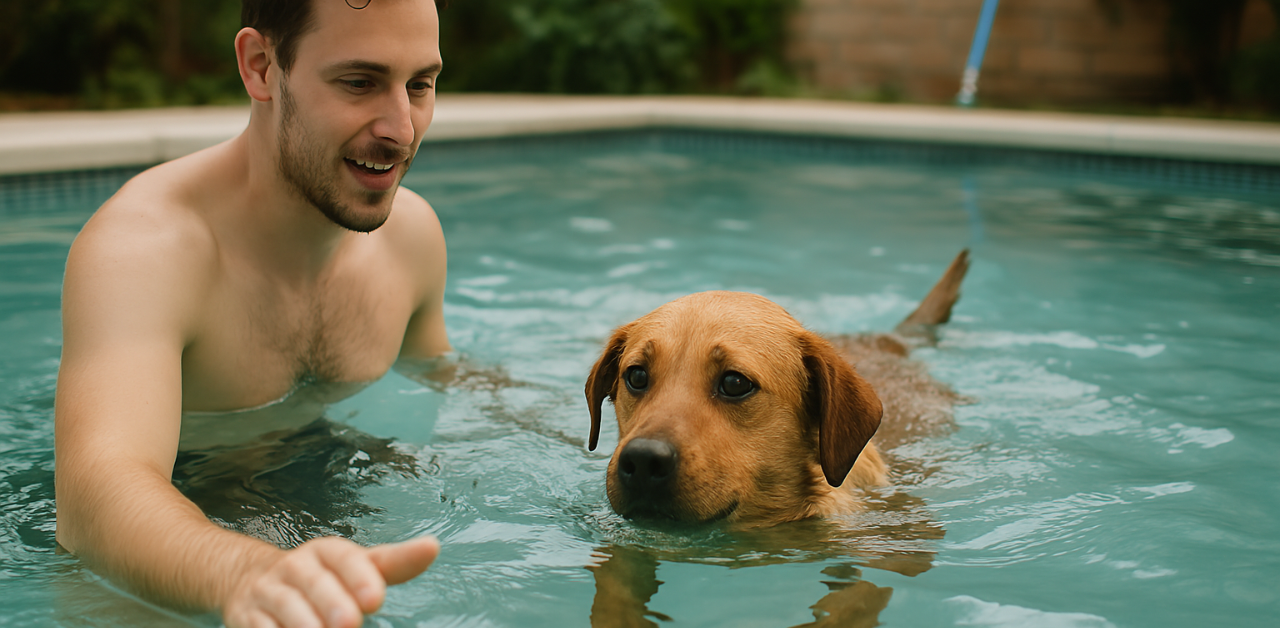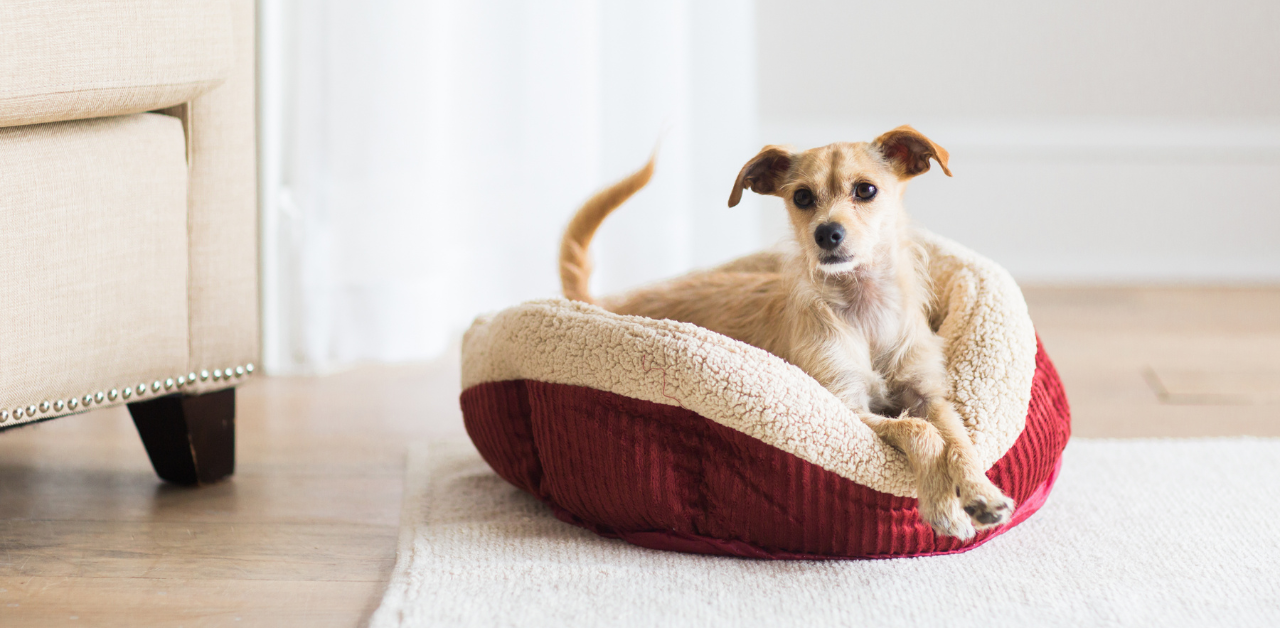Does My Dog Need an Orthopedic Bed?

Updated December 6, 2022
Not all dogs beds are created equal, and dog owners have good reason to pay attention to the differences because the comfort and long-term health of their dogs might depend on it. Most pet parents probably buy a comfortable-looking bed at a reasonable price. But there's more to dog beds than just softness. One thing that most pet parents don't realize is that dogs will sleep for approximately 20 hours a day. Considering how many hours our pups spend snoozing and lounging, their beds can easily be worn down fast, which makes durability an important trait in a dog bed. If your dog's bed is allowed to deteriorate, it can pose risks to your dog's health. Worn-down dog beds tend to do more harm than good, as they expose your dog's joints to an intense amount of pressure from laying on a hard surface that isn't properly cushioned.
When choosing a bed for yourself, comfort and ergonomics are key. In recent years, many of us have taken advantage of memory foam technology and have switched over to orthopedic mattresses. Don't our dogs deserve the same luxury? Orthopedic dog beds operate according to the same principles and better serve our canine companions' sleep needs. You'll likely agree that buying an orthopedic bed for your canine friend is worth the expense.
What are the Benefits of Orthopedic Dog Beds?
Orthopedic dog beds are made with memory foam. These beds create added support by taking away painful pressure points, promoting even weight distribution, and conforming to the shape of your dog's body. Orthopedic beds are considered a proactive measure in protecting your dog's joints and making your dog more comfortable in his bed. His 20 hours of sleep will be much more restful with an orthopedic dog bed in place. So, what exactly does this mean in the long run? Well, with an orthopedic bed, your dog (and you) can expect to enjoy some of the following benefits.
Arthritis Prevention
Arthritis prevention is one key benefit of having an orthopedic dog bed. The Arthritis Foundation reports that one in five dogs suffer from canine arthritis. This unfortunate condition can cause symptoms such as limping, stiffness, lameness, inactivity, and more in afflicted pets, significantly impacting their quality of life.
Fortunately, owners can try to prevent this complication by following a few key preventative measures – one of which includes providing them with a supportive bed. With extra padding to protect them and their joints from the hard floor, dogs may be at a reduced risk of developing arthritis later in life. The proactive measure of providing your dog with an orthopedic bed can help prevent or limit unnecessary pain and discomfort later in life. When the comes to arthritis, then, the benefit of an orthopedic dog bed is two-fold: it improves quality of sleep while helping prevent arthritis.
Hip Dysplasia Treatment
A skeletal condition commonly found in (though not exclusive to) large breeds, hip dysplasia causes a loss of function in the hip joint.
In most cases, hip dysplasia is first caused by genetic complications, though a comprehensive treatment plan can help prevent and treat pets who are at risk of developing the condition. German Shepherds are particularly known for suffering from hip dysplasia in their later years. Hip dysplasia causes the ball-and-socket hip joint not to fit or grow properly. Instead of sliding smoothly against each other, the ball and socket grind against each other, wearing down the joint to the point of loss of functionality. Hip dysplasia, in any breed, can severely limit a dog's quality of life and be hard for an owner to watch develop in their beloved canine companion.
Along with solutions like joint supplements, proper exercise, and quality nutrition, an orthopedic bed can limit excessive stress on your dog's joints and ensure they don't further harm the area. By properly cushioning your dog's joint, orthopedic dog beds take pressure off those joints and provide your dog with a more restful and relaxing sleep.
Sleep Improvement
After hours spent running across your yard, your dog will need a healthy amount of sleep. In fact, most breeds require between 12 to 18 hours of rest each day – something that can heavily depend on the quality of their bed.
Though they might seem happy to plop down anywhere in the house, an orthopedic bed can grant your dog their "own space" that is comfortable and familiar to them. As a result, they will find it easier to relax once it's time to sleep and reduce their chances of waking up during the night.
Puppy Development
Puppies deserve (and need) just as much support to ensure their bodies develop in the most optimal way possible. A soft, supportive orthopedic bed will keep their joints properly aligned throughout the night and help prevent health complications as they age.
So, the earlier you can start providing your dog with a great night's sleep, the better! Making your puppy's first bed an orthopedic one will help you ensure that he will develop correctly.
My Dog Isn't Old. Does He Still Need an Orthopedic Bed?
Your first instinct may be to associate orthopedic beds with older dogs. While order dogs' achy joints can certainly reap the benefits of orthopedic technology, senior dogs are far from the only demographic that can.
So, does your dog still need an orthopedic bed even if he isn't old? The simple and quick answer is yes, orthopedic dog beds are suitable for dogs of all ages. Imagine walking into a mattress store with the intention of buying a new bed for yourself. Would you exclude memory foam beds from your options if you don't fall under the "old" category? Probably not. Imagining that scenario can help you see that orthopedic dog beds benefit all dogs, not matter their age.
If your dog is a thin breed such as a Greyhound or Chihuahua, their unique anatomy leaves them with little to no padding under their elbows or hips. Because of the lack of padding, they will most likely develop callouses in those areas in response to the mass amounts of pressure exerted on those areas when your dog is laying down. If your dog is a breed that is known to experience joint pain, arthritis, or potential hip dysplasia, they are most definitely a candidate for an orthopedic bed.
Signs Your Dog Needs an Orthopedic Bed
Getting an orthopedic bed for your dog, even if they are still a puppy, can promote healthy joints, improve mobility, and prevent conditions such as arthritis and hip dysplasia.
Additional problems that an orthopedic bed can help keep at bay include:
- Bone or soft tissue injuries
- Back or muscle problems
Signs your pup may benefit from an orthopedic bed include:
- Skinny or lean breed
- Your dog has a hard time getting in and out of their regular dog bed
- Your dog appears stiff and slow-moving after sleeping all night on their regular dog bed
- They can't get comfortable in their current bed and keep changing positions
- They refuse to sleep in their bed
What Kind of Orthopedic Bed Should I Buy For My Dog?

When looking for the best orthopedic bed for your dog, you want to look for a bed with at least 2-3 inches up to 7 inches of memory foam. If you can push down on the foam and feel the floor, then the mattress is too thin for your dog. There are many orthopedic beds on the market that use recycled foam and poor stuffing such as egg crate foam which is not ideal for the orthopedic care that memory foam can provide. So be sure to do your research and get a bed that has a solid foam filling and not a "fill" or a "stuffing"
Beds that are "stuffed" or "filled" are usually cheaper but will wear down to the point where the bed becomes ineffective, and your dog will essentially be laying on the floor. Because of this, cheaper beds will need to be replaced once a month. So, in the end, not only are you not aiding your dog's health by buying a cheaper bed; you're not saving yourself any money either because the cheaper beds need to be replaced so often.
The best thing to do for your wallet and for your dog is to purchase a bed that will maintain its shape and not deteriorate quickly. One orthopedic dog bed brand we recommend is La-Z-Boy's line of orthopedic dog bedding. Made from human-grade upholstery and filled with memory foam, these dog beds do more than provide comfort to your pet. They add a touch of class to your home with their elegant designs and trendy fabrics as well.
How Often Should I Replace My Dog's Bed?
Much like us humans, dogs can't simply sleep on the same bed for the rest of their lives.
Though higher quality products will tend to last longer, there will come a time when a replacement is necessary – usually every one to five years. Using your best judgment, you should be able to tell when this time has come by examining factors such as:
- Wear & Tear: If your dog's bed has holes, rips, and/or appears worn-down, consider ordering a new one.
- Pest Infestation: Though rare, it's not impossible for unwanted critters to make their home in your dog's bed. If this occurs, you'll need to discard it as soon as possible.
- Dog Satisfaction: Sometimes, your dog might tell you it's time for a change before you realize it yourself. If they suddenly seem to prefer sleeping on the couch instead of their bed, for instance, it might be because they're ready for a new one.
Conclusion
No matter your dog's age or what life stage their in, an orthopedic dog bed can benefit your dog's overall health in many ways. From relieving pain on pressure points and joints to giving your pet a comfortable place to sleep through the night, orthopedic dog beds are definitely something to consider next time you're in the market for a dog bed.
Additional Resources:
Previous article

Next article

Related posts
View all-

Do Dogs Get Lonely if There Is Only One Dog
Most dogs can feel lonely if there is only one dog in the house. They are pack animals descended from wolves. This means they have instincts that push them to connect with friends or family. When they live as the only dog, they may experience loneliness if they do not receive enough attention.
Read Article -

Teaching a Dog To Swim in Your Pool
Swimming is great fun for dogs, and your swimming pool can be a fantastic place to cool off and play. But not all dogs are natural swimmers. Teaching your dog to swim safely involves patience, gentle encouragement, and a positive experience. Here's how to help your dog learn to enjoy swimming at their own pace, keeping their safety and comfort in mind.
Read Article -

Welcoming a New Dog into Your Home
Bringing a new dog home is an exciting time for you and your family members. This event can inspire a sense of unity among everyone in the household, whether your new pet joins an older dog or is the only dog in the house.
Read Article



